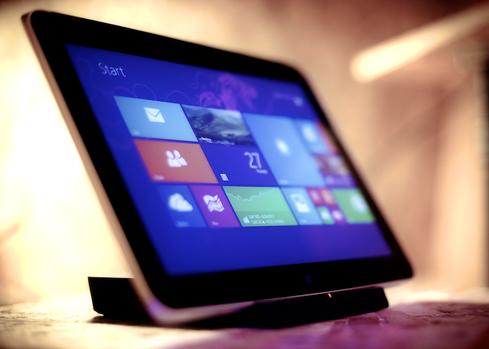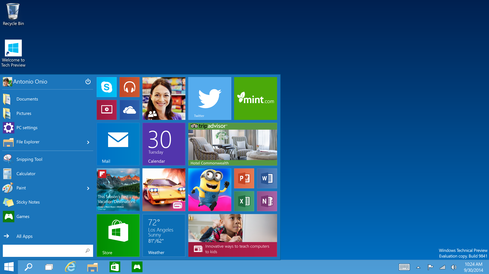Windows 10 Likely To Go Freemium, Analysts SayWindows 10 Likely To Go Freemium, Analysts Say
Microsoft needs new ways to generate revenue, and a subscription-based Windows 10 version is a likely approach. But consumers may get a basic version for free.


10 Windows Tablets, Laptops Under $200: Holiday Steals
10 Windows Tablets, Laptops Under $200: Holiday Steals (Click image for larger view and slideshow.)
Remember those rumors a few months back about "Windows as a Service," an alleged cloud-oriented, subscription-based version of Windows? They're starting to make more sense.
No, Windows isn't likely to shift to a full subscription model, at least not for most customers. But based on Microsoft COO Kevin Turner's recent comments, analysts agree Microsoft will make most versions of Windows 10 free but charge users subscription fees if they want to activate certain features and services.
Microsoft will likely simplify Windows 10 to base, cost-free versions that offer mainstream functionality, said Gartner VP Steve Kleynhans in an email interview. He predicted more expensive Windows editions that enterprises purchase will likely "shift toward a subscription mode, on top of the base product."
Windows licensing costs often hinder businesses and institutions from adopting the newest versions, Forrester analyst David Johnson told information. "Walk around almost any hospital, school or any other cash-strapped organization and count the number of Windows XP machines still in use," he stated. "[Microsoft] has to remove every possible barrier to adopting new Windows releases, and the licensing model is one of the very few things entirely within Microsoft's control."
Gartner VP Michael Silver similarly said Microsoft needs PC users on its newest, most up-to-date technologies. Only around one-fifth of the Windows user base has adopted Windows 8 or 8.1, so if Microsoft wants to charge into a cloud-focused world, it needs more customers to move along.
"The only way to do that is to give away upgrades for free. There's definitely room for a freemium strategy, though," said Silver, who, with Kleynhans, authored a July report that argued Windows is destined for a subscription-oriented future. "
Turner sparked the new round of speculation last week when he said at the Credit Suisse Technology Conference that Microsoft plans to make money from Windows 10 but will need to shift to a model that focuses on services instead of upfront licensing revenue. Analysts polled by information agree that this new strategy is a necessary but difficult response to changing user expectations and market conditions.
"Microsoft is the only company who still builds a significant business selling an operating system," Kleynhans noted, adding that though this model can work with enterprises, it's fallen out of step with consumers. "Today, consumers see the OS as part of the device and don't really distinguish it as a component to be paid for separately."
Figure 1:
Kleynhans believes Windows 10 will be a free upgrade for most consumer versions of Windows Phone, Windows 8 and Windows 7, and that businesses will upgrade through paid support agreements. But it remains to be seen, he said, how aggressively Microsoft will pursue new tactics. "It will undoubtedly be more nuanced than just saying, 'Windows will be free' or 'Windows will be cheaper,'" he said.
Indeed, some analysts have argued enterprise Windows packages will actually grow more expensive. Microsoft makes most of its money from business customers but still needs consumers; in a BYOD world, after all, Office can't stay dominant at work if consumers start using Google Docs or Apple iWork at home. The company's recent decision to add more free functionality to Office for iPad, which previously required an Office 365 subscription for more than document review features, speaks to dynamic. But if Microsoft continues to sacrifice upfront revenue to snare more consumers, it has to compensate with enterprise revenue. Wes Miller, an analyst with Directions on Microsoft, told Computerworld that Microsoft will likely add new features and services to justify higher-priced enterprise subscription packages.
Microsoft has already been experimenting with new Windows revenue models. Turner pointed out that after Microsoft eliminated license costs for Windows smartphones and devices with screens smaller than nine inches, OEMs produced three dozen new devices designs. Many of these new Windows devices undercut Chrome and
Apply now for the 2015 information Elite 100, which recognizes the most innovative users of technology to advance a company's business goals. Winners will be recognized at the information Conference, April 27-28, 2015, at the Mandalay Bay in Las Vegas. Application period ends Jan. 16, 2015.
Android devices on price but include free one-year subscriptions to Office 365.
Microsoft's agenda is ostensibly to trade upfront licensing revenue for marketshare gains, and to hope it makes money in the long run after some of those free Office 365 accounts turn into paid renewals. This strategy "probably sets the stage for how [Windows 10] OEM licensing will work, at least for the base level Windows," said Kleynhans.
Still, it's not clear if Microsoft's new models are actually gaining customers or merely fending off encroachment from Apple and Google. Sub-$200 Windows devices are partly about gaining new customers in emerging markets and at schools, for example, but they're also about persuading existing customers to buy a new PC instead of a Chromebook or iPad.
"So far it seems that Microsoft is more on a defensive move than an attack one," said Carolina Milanesi, chief of research at Kantar Worldpanel. Windows 10 won't hit the market until the second half of 2015, so the company hasn't yet shown all its cards. But the long wait reinforces Milanesi's assertion that Microsoft's plans are somewhat muddled.
Many of the company's most high-profile recent software efforts have focused on iOS and Android rather than Windows; Office for iPad was released last spring, for example, but a touch-first version of Office for Windows tablets isn't expected until late next year. Microsoft's attention to rival platforms makes sense to an extent; to make Office the productivity standard across all devices, Microsoft needs to go where most of the users are -- and for mobile devices, that's not Windows. At the same time, some Windows users have grown impatient, arguing Microsoft has neglected its own platforms while investing in cross-platform projects.
Figure 2:  Unlike Windows 8 and 8.1, Windows 10 will include a Start Menu -- but will existing Windows users have to pay to access it?
Unlike Windows 8 and 8.1, Windows 10 will include a Start Menu -- but will existing Windows users have to pay to access it?
"The problem is that if you send a message to one group, you end up sending messages to others," Jackdaw Research analyst Jan Dawson said in an interview with Computerworld. "And sometimes that can backfire."
Milanesi said Microsoft is still devising revenue strategies for a future in which Windows is no longer a sacred cow. The company's core pillar "cannot be Windows given the competition from Google and Apple and [Microsoft's] weak position in mobile," she stated. "Windows needs to become a tool to draw to other areas -- Office or cloud."
Kleynhans agreed. "All of this is part of shifting Windows from the lead actor to a supporting role," he said.
Johnson echoed that Microsoft's most recent strategies have focused more on retaining Windows customers tempted by competing platforms than on gaining new users. But he said there's a more important takeaway: Microsoft is "rethinking how the Windows OS can unlock new value and revenue streams for other capabilities and features."
Microsoft needs its software and services to be available on all major devices and platforms, for example, but can still ensure that those services are best integrated in Windows. Microsoft chief experience office Julia Larson-Green said in November that Microsoft might release Cortana, the Windows Phone 8.1 virtual assistant, for other platforms, for example. In this scenario, Microsoft could limit the progress of competitors such as Siri and Google Now by giving iOS and Android users an alternative. But because Microsoft has more control over its own platforms than it does over Android or iOS, the Windows version of Cortana will likely include features that are absent in editions for other OSes.
Johnson stressed that a subscription-oriented Windows model could be empowering to users. "It will make it easier for people to tack on the features and services they need and value the most, without having to pay the entire cost upfront," he said.
Still, Johnson cautioned that Microsoft faces steep challenges. He said the company has to assess not only what people want in 2015 but also over the next several years. "That's the minimum time it takes to go from concept, to release, to broad adoption of many technologies," he stated. He noted that OneDrive, Microsoft's cloud storage platform, was released to beta testers around the same time that Dropbox debuted, and that Dropbox moved much faster to build a user base. Even if Microsoft is pointed in the right direction, he said, there is no guarantee its new technologies will become market leaders.
Apply now for the 2015 information Elite 100, which recognizes the most innovative users of technology to advance a company's business goals. Winners will be recognized at the information Conference, April 27-28, 2015, at the Mandalay Bay in Las Vegas. Application period ends Jan. 16, 2015.
About the Author
You May Also Like






